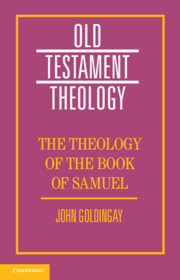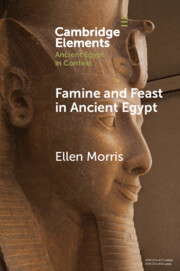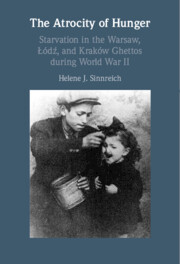87 results
Chapter 7 - Yahweh Who Watches a King (2 Samuel 11:1–24:25)
-
- Book:
- The Theology of the Book of Samuel
- Published online:
- 08 May 2024
- Print publication:
- 09 May 2024, pp 178-213
-
- Chapter
- Export citation

The Theology of the Book of Samuel
-
- Published online:
- 08 May 2024
- Print publication:
- 09 May 2024
Missing millions: Java’s 1944–45 famine in Indonesia’s historiography
-
- Journal:
- Modern Asian Studies , First View
- Published online by Cambridge University Press:
- 12 April 2024, pp. 1-21
-
- Article
-
- You have access
- Open access
- HTML
- Export citation
1 - The Limits of French Colonial Visions and Science
-
- Book:
- Creolised Science
- Published online:
- 03 April 2024
- Print publication:
- 04 April 2024, pp 18-50
-
- Chapter
- Export citation
2 - Ireland
- from Part I - Five Case Studies of Acts of Union and Disunion
-
- Book:
- Brexit, Union, and Disunion
- Published online:
- 26 October 2023
- Print publication:
- 09 November 2023, pp 78-139
-
- Chapter
- Export citation
7 - Radical Reformism and the Challenge of Capitalist Complacency
-
- Book:
- Ethical Empire?
- Published online:
- 05 October 2023
- Print publication:
- 19 October 2023, pp 221-250
-
- Chapter
- Export citation
Somalia's evolving political market place: from famine and humanitarian crisis to permanent precarity
-
- Journal:
- The Journal of Modern African Studies / Volume 61 / Issue 3 / September 2023
- Published online by Cambridge University Press:
- 20 October 2023, pp. 343-366
- Print publication:
- September 2023
-
- Article
-
- You have access
- Open access
- HTML
- Export citation
4 - Iran in Transition
- from Part II - Desultory Modernities (1914–1941)
-
- Book:
- Heroes to Hostages
- Published online:
- 03 August 2023
- Print publication:
- 24 August 2023, pp 83-102
-
- Chapter
- Export citation
7 - From Culture Wars to a World War
- from Part III - Cataclysms (1941–1963)
-
- Book:
- Heroes to Hostages
- Published online:
- 03 August 2023
- Print publication:
- 24 August 2023, pp 145-190
-
- Chapter
- Export citation
“Don't Let the Boats Pass!” Neo-Elamite Grain Procurement in Times of Famine and Drought
-
- Journal:
- Iranian Studies / Volume 56 / Issue 3 / July 2023
- Published online by Cambridge University Press:
- 03 August 2023, pp. 439-456
- Print publication:
- July 2023
-
- Article
-
- You have access
- Open access
- HTML
- Export citation

Famine and Feast in Ancient Egypt
-
- Published online:
- 16 June 2023
- Print publication:
- 06 July 2023
-
- Element
- Export citation
A forgotten famine of ’43? Travancore’s muffled ‘cry of distress’
-
- Journal:
- Modern Asian Studies / Volume 57 / Issue 5 / September 2023
- Published online by Cambridge University Press:
- 13 June 2023, pp. 1495-1529
- Print publication:
- September 2023
-
- Article
-
- You have access
- Open access
- HTML
- Export citation
POVERTY
-
- Journal:
- Social Philosophy and Policy / Volume 40 / Issue 1 / Summer 2023
- Published online by Cambridge University Press:
- 05 February 2024, pp. 1-8
- Print publication:
- Summer 2023
-
- Article
-
- You have access
- Open access
- HTML
- Export citation
15 - William the Conqueror’s Harrying of the North, 1069–1070
- from Part III - The Medieval World and Early Imperial Expansions
-
-
- Book:
- The Cambridge World History of Genocide
- Published online:
- 23 June 2023
- Print publication:
- 04 May 2023, pp 403-424
-
- Chapter
- Export citation
5 - Climate, Violence and Ethnic Conflict in the Ancient World
- from Part I - Themes of Genocide through History
-
-
- Book:
- The Cambridge World History of Genocide
- Published online:
- 23 June 2023
- Print publication:
- 04 May 2023, pp 150-182
-
- Chapter
- Export citation
4 - Genocide, Starvation and Famine
- from Part I - Themes of Genocide through History
-
-
- Book:
- The Cambridge World History of Genocide
- Published online:
- 23 June 2023
- Print publication:
- 04 May 2023, pp 127-149
-
- Chapter
- Export citation
Introduction
-
- Book:
- The Atrocity of Hunger
- Published online:
- 09 February 2023
- Print publication:
- 16 February 2023, pp 1-16
-
- Chapter
-
- You have access
- Open access
- HTML
- Export citation
Conclusion
-
- Book:
- The Atrocity of Hunger
- Published online:
- 09 February 2023
- Print publication:
- 16 February 2023, pp 201-206
-
- Chapter
-
- You have access
- Open access
- HTML
- Export citation
Chapter 8 - Starvation and Caloric Restriction in Adults
-
- Book:
- Diet Impacts on Brain and Mind
- Published online:
- 02 February 2023
- Print publication:
- 09 February 2023, pp 250-306
-
- Chapter
- Export citation

The Atrocity of Hunger
- Starvation in the Warsaw, Lodz and, Krakow Ghettos during World War II
-
- Published online:
- 09 February 2023
- Print publication:
- 16 February 2023
-
- Book
-
- You have access
- Open access
- Export citation



